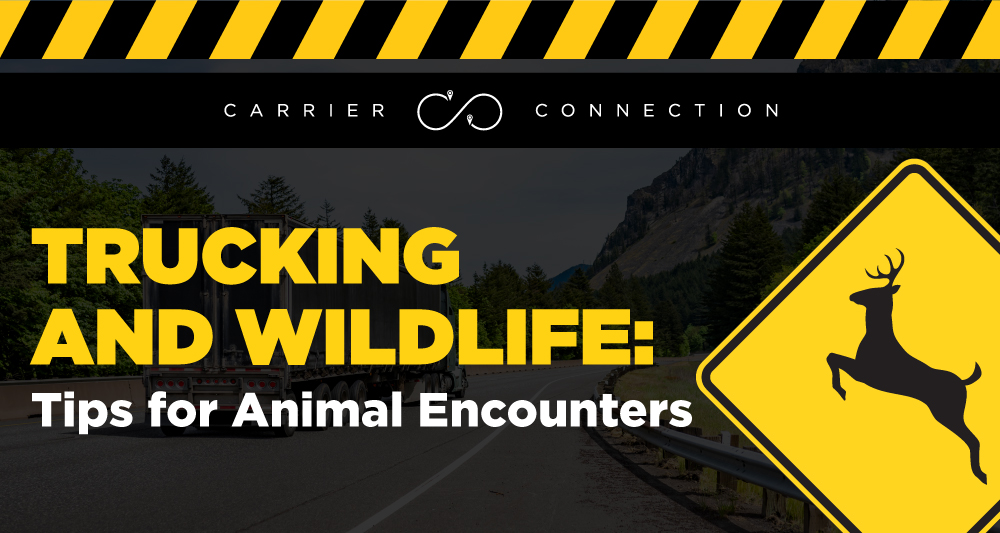![]()
As infrastructure expands to accommodate a booming supply chain, trucking and wildlife cross paths more frequently. While the occasional animal sighting can shake up the view, animal encounters can also be a significant hazard for themselves and the drivers.
To help you know how to avoid a potentially hairy run-in, get to know the behaviors of some common roadside critters.
-
Deer
Deer are among the most dangerous animals to encounter on the road. Not only are they unpredictable, but their size means they could damage a rig in a collision. Here are a few things to know about deer:
- Deer are most likely to be encountered during dawn and dusk. Be on the lookout during these periods.
- Deer mating season occurs in the fall, causing deer populations to be more active before winter.
- Deer almost always travel in groups. If you see one deer on the road, you can anticipate that others may be nearby.
What to do if a group of deer is blocking your path: Though you may be tempted to blare your horn, doing so immediately will startle the deer and may lead to erratic behavior. If you confront a group of deer, your best bet is patience. If you find that your group of deer is particularly stubborn, contact local authorities for assistance concerning trucking and wildlife.
-
Rodents
Raccoons, rabbits, and rodents are often part of the daily trucking experience. Although they are small, these animals can still pose a threat to a trucker’s safety. Here are a few facts about rodents:
- Like deer, most rodents will travel in families. If you see one, be on the lookout for others.
- Some rodents are nocturnal; others are diurnal. Day or night, you must watch out for something scurrying across the road.
- Rodents are agile and capable of changing directions suddenly. Just because a rodent isn’t immediately in your line of travel doesn’t mean it won’t be.
What to do if a rodent is occupying the road: If a rodent catches you by surprise, do not swerve. If you have time to anticipate the animal, come to a gradual stop and wait for the rodent to pass.
-
Bears
Needless to say, a bear encounter can be very frightening. Bears can weigh anywhere from 400 – 1200 lbs., making them apex predators and a primary threat to trucks.
Bear encounters are uncommon, but here are a few things to know:
- Bears often follow rivers as a means of navigation. If you’re hauling near a river in a forest, you’ll want to be on high alert.
- Bears are also attracted to anything with a strong scent. If you’re driving through a wooded area and spot a cluster of dumpsters, this is another time when you’ll want to be particularly vigilant.
- Bears are most active during spring and fall as they exit and prepare for hibernation. Bear encounters rise during these seasons.
What to do if a bear is crossing the road: Give the bear its space. A provoked bear can become aggressive, so lay off the horn. In a bear encounter, you are safest inside your rig. Wait patiently for the bear to cross, and never leave your vehicle. If a bear is stalled in the middle of the road, contact authorities for assistance.
Animal encounters can range from amusing to dangerous. You can keep yourself and your rig safe from a potential collision as you exercise these best practices for trucking and wildlife. After all, the open road is best enjoyed when it’s shared by all, including wildlife.
—
The England Carrier Services (ECS) division offers various services for carriers ranging from maintenance to support. As ECS members, carriers have access to nationwide discounts on fuel and tires from dedicated team members committed to finding the best price. ECS also provides factoring services with benefits such as same-day funding to a bank account or fuel card. These options allow carriers the freedom to focus on growing their business while saving time and money.



